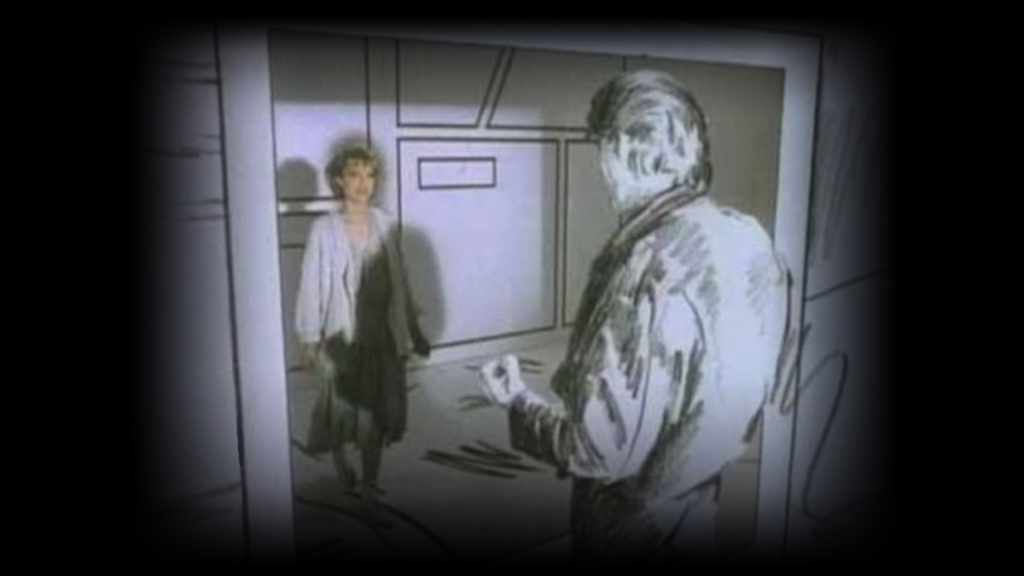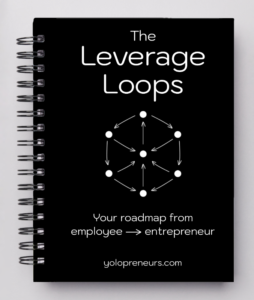This song has sold over 10 million copies.
Its video has over 1 billion views on YouTube.
The famous keyboard riff was created by a 15-year old.
But, the first 3 versions bombed. It took 7 years to perfect.
Here’s the story of how persistence led to the smash hit ‘Take on Me’.
Beginner’s Hell
Starting off a project can be tough.
You’re excited, but aren’t seeing quick success.
You start to wonder if you’re just wasting your time.
At this point, you might start thinking about giving up.
The irony is that, if you do, you’ll just go on to waste your time.
What I’ve realized is that failure is not the opposite of success. Surrender is.
What’s seen as overnight success is actually the result of Persistent Iteration.
It’s no better to be safe than sorry
A great example is the 80’s hit ‘Take On Me’.
The song originated as a simple keyboard riff created by Magne Furuholmen in 1977.
He was just 15.
Furuholmen had formed a band named Bridges with his school friend, Paul Waaktaar.
Amazingly, the band thought the riff had too much of a pop feel.
So, they incorporated it into a track with a “punky” edge to offset the riff.
The result was ‘Miss Eerie’ which they released in 1980.
Although catchy, it would go no where. The band had no audience to spread it.
Soon after, Bridges disbanded.
Furuholmen and Waaktaar went to London to try their hand in the music industry there.
But, after six months of disappointment, they were forced to return to Norway.
Back at home, the two met up with Morten Harket.
Harket had been in the audience years earlier when Bridges performed at a concert.
He had approached the band after the concert and asked, unsuccessfully, to join.
As fate would have it, they would later reunite to form a-ha.
The trio revised the melody and structure of ‘Miss Eerie’ into a new song called ‘Lesson One’.
It bombed.
The band reworked the song again into a new version they called ‘Take on Me’
In January 1983, the band returned to London in search of a recording contract.
They auditioned with Warner Bros Records America and were immediately signed.
A Warners Bros executive said “I couldn’t believe my ears when I heard Morten Harket sing. I thought, how can somebody who looks like a film star sound like Roy Orbison? I thought, this is unbelievable.”
The band soon released ‘Take On Me’ as a single in the UK accompanied by a performance video.
This version of ‘Take on Me’ charted at only 137 in late 1984.
But the trio was not done.
Warner Bros approved a large investment in the band and brought in a new producer to refine the song.
The new recording had a much cleaner and soaring sound.
Warner Bros also funded development of a music video using an innovative technique called rotoscoping, which amounts to tracing animation over live-action footage.
The video took 4 months to complete, but played a critical role in the song’s breakthrough success.
The rotoscoped version of “Take on Me” debuted on MTV in 1985.
It became an instant sensation helping the single hit the top spot on the Billboard Hot 100 chart.
Today is another day to find you
The willingness to revise and evolve Take on Me was key to its success.
Each version of the song was not possible without the prior.
As I talked about in “Welcome to the Adjacent Possible”, growth and innovation occur step by step from your current position.
The flawed initial versions serve as the scaffolding upon which better versions are built.
To implement Persistent Iteration in your projects, follow these steps:
1) Start Simple: Start with a basic version of your idea, whether it’s a draft of a book, a song riff, or a business concept. The core should be clear enough to set the stage for further development.
2) Launch and Learn: Share your initial work with the world sooner rather than later. This early exposure allows you to gather valuable feedback. Constructive criticism provides insight into how your work is received and sparks ideas for refinements.
3) Iterate Relentlessly: Take the feedback you receive and use it to refine your work. Whether minor tweaks or major overhauls, don’t hesitate to adjust your approach based on the responses you get. This process of iteration is crucial to improving the quality and impact of your project.
4) Embrace the Pivot: If a particular approach isn’t working, be prepared to take bold steps in new directions. Sometimes, a fresh approach can breathe new life into your project. Remember, each version is a learning opportunity.
5) Document the Journey: Keep a record of all feedback and changes made. This documentation is a valuable resource for understanding which strategies work and why. It will help you make better decisions in future projects.
Join us
The hardest part in achieving success is putting the first pieces into place.
Build on what you’ve learned from the story of Take on Me.
Subscribe to our newsletter for more strategies that highlight Persistent Iteration.
Warm regards,
The Edupreneur



